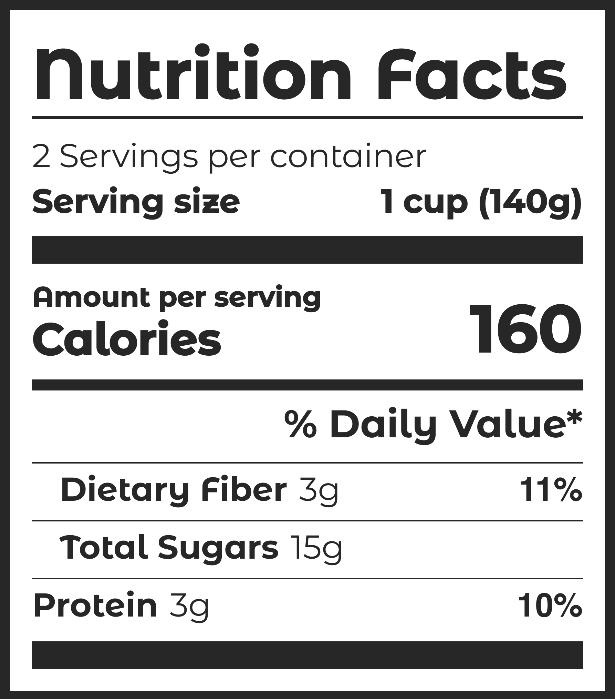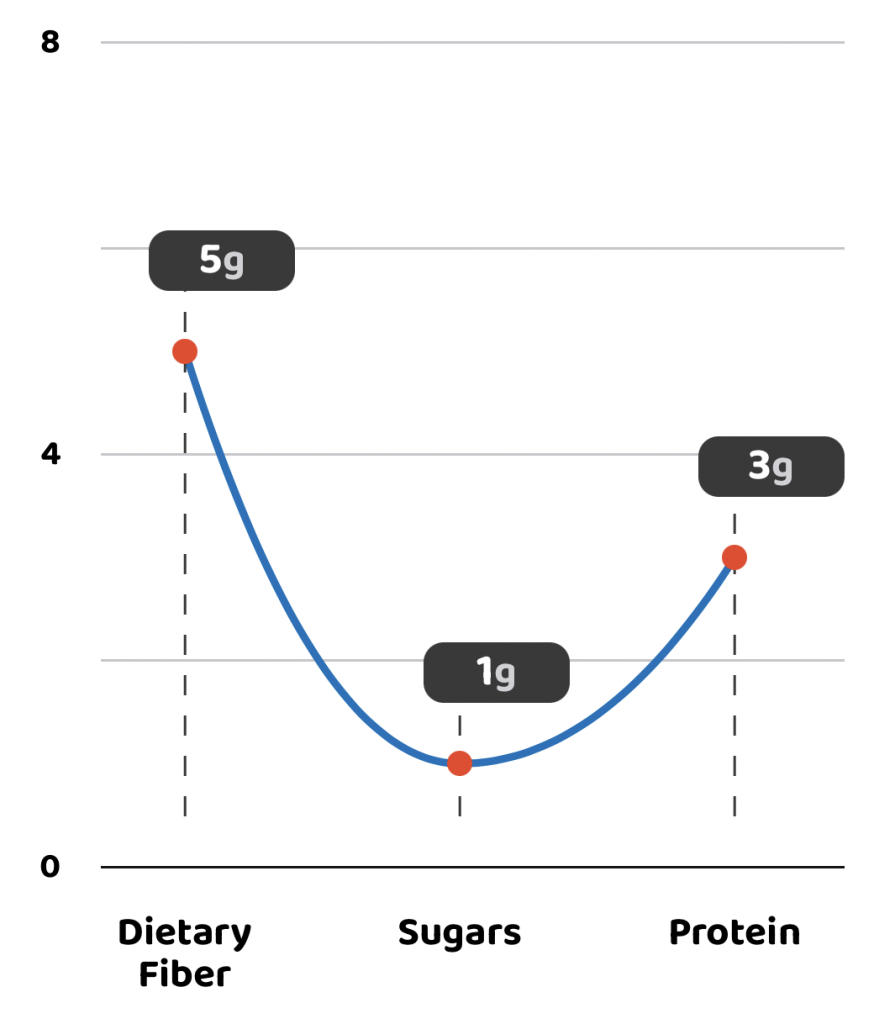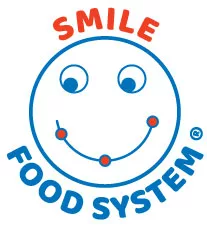This company was founded with the mission of offering a mobile app to improve public health, in particular, YOUR health. The Smile Food System mobile app contributes to selecting nutrient-dense foods to improve overall diet quality. This may lower the risk of lifestyle-related diseases, improve your weight and mood, and give you more energy with fewer mid-day crashes! The most nutritious foods are
classified as “smile foods.” Everyone needs to smile!
The app works as follows: Look at just three food components to see if it is nutritious: fiber, sugars, and protein. Use the Nutrition Facts Table on the food’s package to find the values, in grams, per serving, then enter those three nutrition values using the app’s graphing clickers. The app will generate a graph when you select “Score Your Food.” After that, you can view the graph, with or without gram values of each item on the graph, and select “See Food Health Rating” to get a simple, smile-type image, accompanied with advice on eating the food and balancing your diet. The smile-type images are full smiles, grins, half-frowns, flat faces, and full frowns.


In addition, the app is embedded with two closely related but distinct graphing and rating systems: one that counts only added sugars and one that counts total sugars. The default system uses added sugars as the nutrition component to compare to fiber and protein. In this system, natural sugars occurring in the food are ignored, and the nutritional content of the food is based on the relative values of fiber, added sugar, and protein. In this way, naturally occurring sugars in food are considered an acceptable component of the food, without prompting the need to use caution when consuming such sugar. This rating system places all fruits within the smile or half-smile food categories because they have no (zero) added sugar, only natural sugar, so their fiber and protein content will always outweigh their sugar content. This is true of various vegetables also. Other, similar foods with no added sugars—even if they contain natural sugars—will be flat faces, or possibly smile or half-smile foods. This includes honey and packaged sugars (granulated, powdered, brown, and so on). They have zero added sugars because all of their sugar content is naturally occurring. All of these foods used in baking (and not often eaten alone) are flat faces, with zero fiber and zero protein, along with zero added sugars.
In the parallel but different system, total sugars are counted. This system is much more cautious about consumption of all sugars, whether natural or added, and, for this reason, this system is ideal for persons who want or need to carefully monitor and reduce their total sugar consumption (for example, diabetics). Based on widely accepted nutrition science, one is advised to watch ALL sugar consumption and keep it to a moderate daily level, whereas fiber and protein are almost always (for the majority of people) important building blocks of a balanced, nutritious daily diet and are not typically over-consumed. They are, in fact, often under-consumed, while people often eat too much sugar, fats, and refined carbohydrates. Therefore, using the app to graph and rate total sugars relative to fiber and protein would very likely lead to reduced sugar consumption and increased fiber and protein consumption, which is a prudent and recommended eating strategy.
When counting total sugars, interestingly, nearly all fruits are frown foods due to their high levels of naturally occurring (total) sugars, but the USDA’s dietary plate method (food pyramid) recommends approximately two servings of fruit each day, and we at SFINE always say that eating a few frown foods each day makes for a varied and delicious diet, so we do not say avoid frown foods, only “skip” some of them as they are presented to you as options. Pick some and skip some. Vegetables, furthermore, with high levels of natural, inherent sugar are often frown foods also. But, vegetables have many benefits, on top of tasting sweet due to natural sugars, so they are an important part of a balanced diet, too. Enjoy eating natural, whole foods—especially fruits and sweet vegetables—because your body will make use of all the food’s parts: fiber, protein, natural sugars, mineral, vitamins, and inherent water.
On top of the basics of a nutritious diet, you can enjoy an occasional dessert or treat, but remember that all of the sugar foods mentioned above, even when fully natural and not processed (honey and sugars used in baking—granulated, powdered, and brown, for example), are frown foods, which should be approached with caution and skipped as often as eaten, if not more often. Your body will suffer if it fails to be nourished with adequate fiber and protein, but it will not be harmed without honey and sugar. Eat the smile foods; skip the frown foods.
